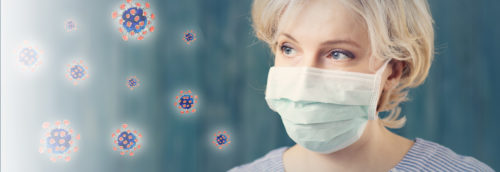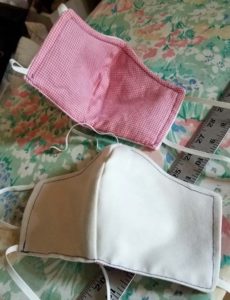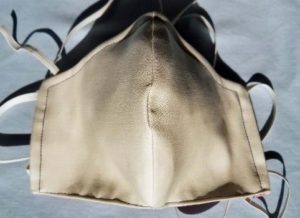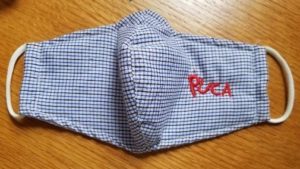
COVID-19 Updates | CWP
Discussions with Deb: We Are All the Lone Ranger Right Now
April 13, 2020
April 13, 2020
CWP
COVID-19 Updates
Today most of us are being told to stay home to contain the Covid-19 virus and only leave home for necessary trips such as to visit a doctor or to pick up medications or food. In Ohio we are being told to use cloth masks, along with continuing other prudent precautions like maintaining a 6 foot distance between people. Social distancing has slowed down the rate of infection and it is important we continue doing this, as well as staying home as much as possible even when wearing a cloth mask.
Cloth masks do NOT offer the same protection as the N-95 masks our health care providers need to protect themselves from this pernicious virus, but they do seem to help slow down the spread of disease if properly used. And as the N-95 masks must be saved for our healthcare workers, cloth seems to be the only option for the rest of us.
But how do we use cloth masks safely? What are the best materials to use? What is the best design? It’s a confusing subject. I am not a healthcare provider, scientist, or specialist of any kind but I thought it might be useful to share some of what I have learned about cloth masks.
First of all no mask will work if it is not used properly.
- Cloth masks need to fit the face snugly. Wearing one with gaps where air can get in is pretty worthless.
- Also, wearing a mask over facial hair does not work for the same reason.
- Do not pull your mask down when you are wearing it. This defeats the purpose.
- Masks need to be washed in hot water and dried in a hot dryer or in the sun after each use. It is possible to pass contamination from the mask to your hands and then your face if this is not done.
There are many different styles of do-it-yourself masks out there. If you do a Google search you will find different designs. Some of the best designs seem to come from hospitals. Two I like are from University of Minnesota and the Olson Mask. I’m sure there are other good designs.
Here are a couple adaptations I have made when sewing a mask:
- 1. Cotton seems to be the most highly recommended fabric for both the inner and outer layers.
- 2. I use a high thread-count fabric for the outer layer. Think good quality bed sheets. I have read that if you hold a fabric up to the light and can see light come in between the threads the fabric will offer little protection.
- 3. I use a softer fabric for the inner layer-again with as high a thread count as possible. I’m currently using a fairly tightly woven flannel.
- 4. When putting the two layers together I am careful not to only place pins outside of the stitching area so I won’t puncture the mask.
5. The ties need to have some stretch to tie tightly. Elastic is good but I hear it is in short supply right now. You may be able to use strips of knit in a pinch.
6. If you want to use a loop behind the ear style, large hair ties will work.
7. I place a 4 inch piece of pipe cleaner above the nose and sew it into place. This allows you to bend the nose part of the mask around your nose to tighten the fit.
8. Many masks use loops around the ears to hold the mask in place. This may be fine for some people but may slip off the ears for others. Also, for the mask to stay tight this will put strain on the back of the ears.
9. A nurse told me that the most reliable way to attach a mask is to have it secured behind the head and tied behind the neck. One variation of this is shown in the National Jewish video above.
10. The same nurse also told me that when cloth masks were worn in the past they would spray starch onto the outer layer to close the pores a little more. I have not tried this.
Some masks have pockets for adding a filter to provide more protection. The problem with using a filter is that the Corona virus is very small and the filter needs to be the proper size to eliminate the virus. I have not been able to find reliable research on the best filtering materials to use. I have seen some people recommend using furnace filters, vacuum cleaner bags and other industrial materials. I’m leery of this unless you research the materials carefully and feel confident that these are safe to breath. Remember the purpose of a mask is to filter the air you are breathing. You really don’t want to introduce any toxins into your airway inadvertently.
I hope some of you will find this useful. Remember-I am no expert; just a person with a sewing machine trying to get through this crisis like you are. The best way to beat this virus is to continue to self-isolate. Please stay home as much as possible and stay safe!



